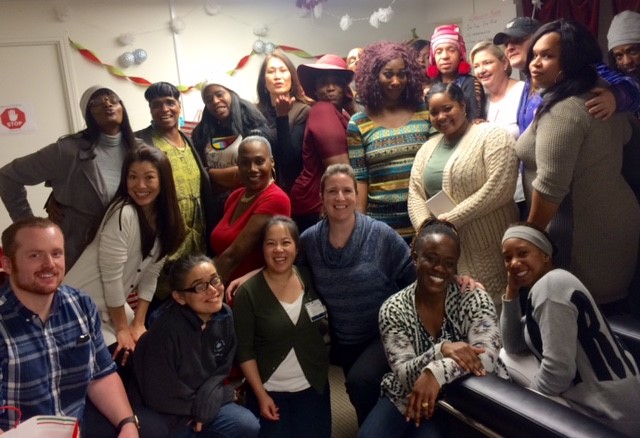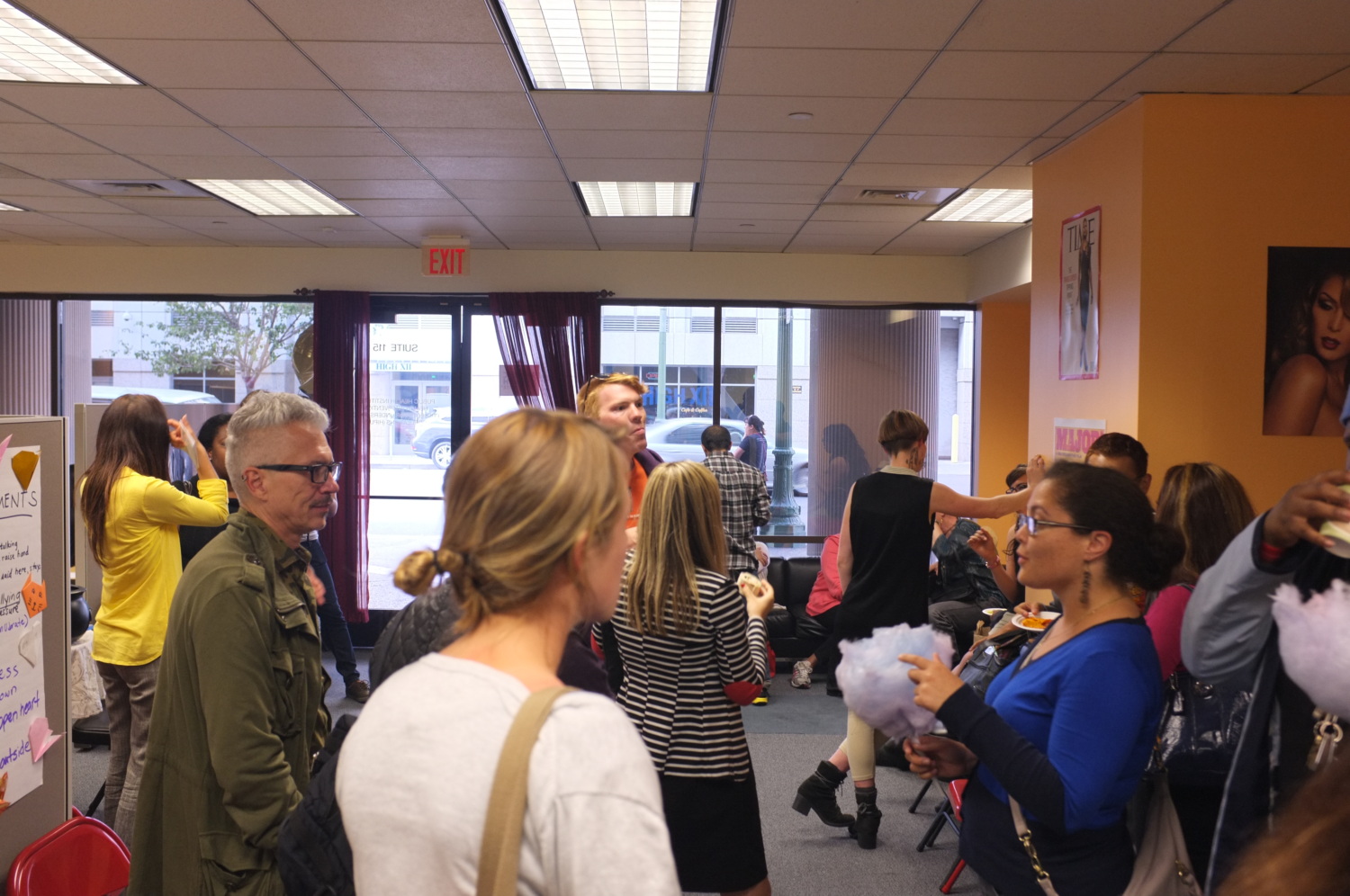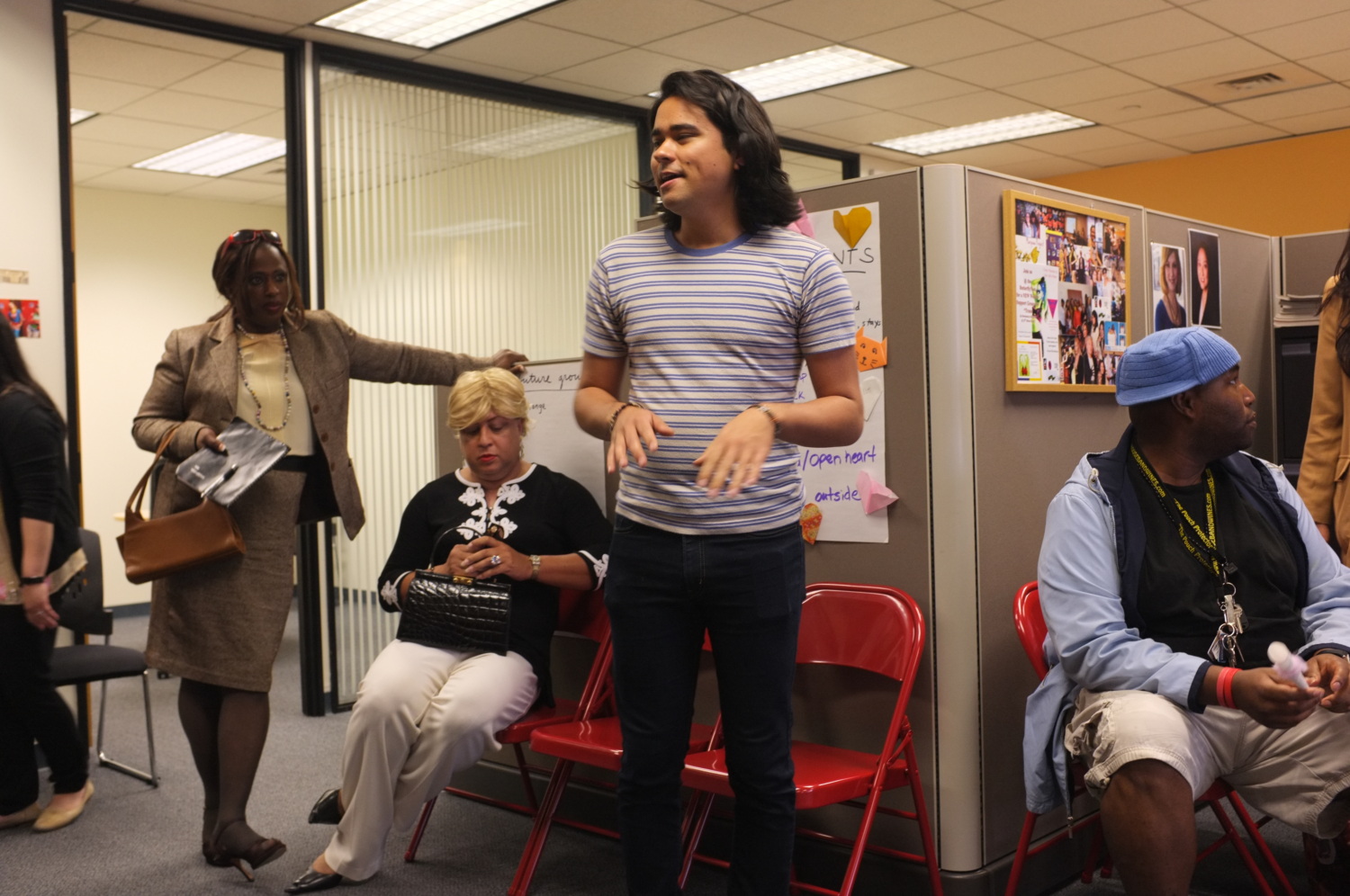‘Flourish Project’ Helps Improve Health Outcomes for Transgender Women of Color
Highlights

PHI’s Flourish Project was instrumental in helping to improve health outcomes for transgender women of color in Alameda and San Francisco counties. By accessing critical health education and support groups, and connecting to key resources such as housing, employment and mental health, women were able to reduce substance use and sexual risk behaviors.
5K+ reached through outreach activities
334 transgender women participated in the program
99% of the participants reported being tested for HIV at the end of the project
52% of the participants decreased alcohol use
57% of the participants decreased in engaging in sex work
37% of the participants decreased cocaine use
-
Focus Areas
Alcohol, Tobacco, Drugs & Mental Health -
Issues
Alcohol, Mental Health -
Expertise
Health Education & Promotion, Leadership Development, Outreach & Dissemination, Research – Survey
Transgender people have faced widespread disparities, discrimination and violence, impacting their overall health and making it challenging to thrive. According to the Office for Victims of Crime, a program of the Office of Justice Programs, about half of transgender people reported having experienced physical and sexual violence on the streets, at school or work, at home or from helping professionals and many are re-victimized. Transgender women and trans women of color face some of the highest rates of violence of all populations.
Pervasive discrimination has also made it challenging for transgender people to find permanent and stable housing and employment. 63% of transgender adults have experienced homelessness in their lifetime and more than 1 in 4 transgender people have lost their jobs due to discrimination. Faced with early expulsions from their family home, a lack of housing, and discriminatory hiring practices, some transwomen turn to sex work for a reliable income. When women rely on sex work because they have few other options, they are at higher risk of experiencing violence, sexually transmitted infections, and incarceration.
The Public Health Institute’s Flourish Project is addressing many of these barriers for transgender women. The project serves adult transgender women of color in Alameda and San Francisco counties in California and focuses on reducing substance use and HIV-related risk behaviors, while improving health outcomes for trans women of color. The Flourish Project equips participants with key health education, tools and support groups, and connects them to critical resources such as: housing, employment and mental health services to help improve their health and well-being.
Challenges in Communities
Over the course of the project, participants shared some of the challenges they faced in accessing housing in their communities, which made it difficult for participants to reach their optimal health and thrive, including:
- Women were treated less favorably and discriminated against because of their gender identity and due to transphobia (dislike or strong prejudice against transgender people) from landlords.
- Some participants were profiled by government officials as sex workers, substance users, or as having mental health challenges.
- Women experienced a lack of legal support and did not receive protection from authorities.
- The lack of affordable housing in the Bay Area and its surrounding communities made it difficult to find safe and permanent housing.
- The lack of cultural awareness and sensitivity from the broader community led to discrimination, which resulted in housing evictions and homelessness for some women.
Our Approach to Helping Transgender Women Flourish
Between 2017 and 2022, the Flourish Project recruited trans women of color in Alameda and San Francisco counties through community and online outreach. Health educators from the project canvassed neighborhoods with flyers and palm cards, targeting venues where many trans women go to be in community (i.e. community events, community-based organizations, fairs, parties, ball events). It was important that the staff who conducted outreach and provided educational services were from the community they were serving and could help to build trust with participants, so many were also transwomen of color.
Flourish Project staff also integrated creative approaches for online outreach (especially during COVID) such as Instagram posts and messaging through dating apps, Grindr and Scruff, which were strategic ways to reach and recruit participants for the Flourish Project.
Over 5,000 people were reached through outreach activities and 334 transgender women participated in and completed the program.
Participants were involved in the following activities/interventions throughout the project:
- 2-hour intake assessment upon enrollment in the program
- 3 Motivational Enhancement Intervention (MEI) sessions; Flourish project staff utilized a gender-sensitive MEI curriculum targeting transwomen of color.
- Referrals to critical resources: housing, employment, mental health services and more
- Counseling program and peer-led support groups (Sister Tea Talk) with activities
- Exit interview upon completing the program
- 6-month follow-up interview
Key Successes from the Program
An evaluation of the project was conducted based on pre- and post-intervention surveys and observations by staff. Key interventions from the Flourish Project, led to the following successes and outcomes:
- Motivational Enhancement Intervention sessions: Feedback from participants and observations indicated that the sessions had a positive impact on mental health, safe sex practices and substance use among transgender women of color who completed the intervention of the project.
- Connecting participants to critical services: Over 3,000 referrals were made through the Flourish Project’s weekly support groups to local CBOs that provide gender-sensitive services to trans women of color. The types of referrals included: housing, employment, education, mental health counseling, legal assistance, support groups, substance use treatment, health care, and viral hepatitis and HIV testing.
- More HIV testing: The majority of participants reported being tested for HIV (96%) when they entered the program; upon the exit of the program this number increased to 99%.
- Greater hormone use through a health provider: Gender affirming hormones can help to improve mental health and lower the risk of depression. Uninsured or underinsured individuals sometimes turn to alternative avenues for obtaining hormones (i.e. internet pharmacies, friends or family). Among the participants (n=334), 87% reported using hormones in their lifetime at intake and more than half of the participants (57%) said that their hormone injection was not performed by a medical professional/doctor. The percentage of hormone injections performed by a medical professional/doctor increased from 43% at intake to 57% upon follow-up.
- Lower substance use: The majority of participants (95%) reported that they used alcohol, marijuana or illegal drugs in their lifetime. By the end of the program, the percentage of participants who reported using alcohol in the previous three months significantly decreased from 84% at the intake to 32% at the follow-up. Participants who reported using marijuana in the previous three months significantly decreased from 80% at the intake to 32% at the follow-up. The use of other drugs/substances, such as cocaine and methamphetamines, also decreased after completing the intervention. Participants’ use of cocaine in the past three months decreased from 46% at the intake to 9% at the follow-up and amphetamine use decreased from 52% at the intake to 12% at the follow-up.
- Reduced engagement in sex work: The percentage of participants who had engaged in sex work decreased from 64% at the intake to 7% at the follow-up.
- Fewer high-risk behaviors: The percentage of participants who reported behaviors such as using injected drugs, having unprotected sex, having unprotected sex with someone who is/was HIV positive or has AIDS, having unprotected sex with an injection drug user, and having unprotected sex with an individual who is high on a substance, decreased significantly at their 6-month follow-up.
- Improving mental health outcomes: The number of participants who reported mental health issues, decreased at the time of their 6 month-follow-up assessment. For example, patients who experienced depression and anxiety decreased by 20% from their intake to their 6-month follow up.
PHI’s Health Intervention Projects of the Underserved received a 5-year grant from Substance Abuse and Mental Health Services Administration (SAMHSA) to continue operating the Flourish project through 2027. The second phase of the project is referred to as Flourish 2 and will offer five Motivational Enhancement Intervention (MEI) sessions to help address clients’ housing and employment challenges, and reduce substance use and sexual risk behaviors.
The Flourish Project is a program of the Health Intervention Projects of the Underserved (HIPUP) at the Public Health Institute. HIPUP conducts substance abuse and HIV/AIDS prevention and treatment research/programs for underserved populations (e.g. gender and ethnic minorities). Through collaboration with targeted communities, HIPUP strives to have a significant impact on health promotion and human rights for underserved communities locally and internationally. Learn more by visiting the HIPUP website.
Work With Us
You change the world. We do the rest. Explore fiscal sponsorship at PHI.
Support Us
Together, we can accelerate our response to public health’s most critical issues.
Find Employment
Begin your career at the Public Health Institute.






